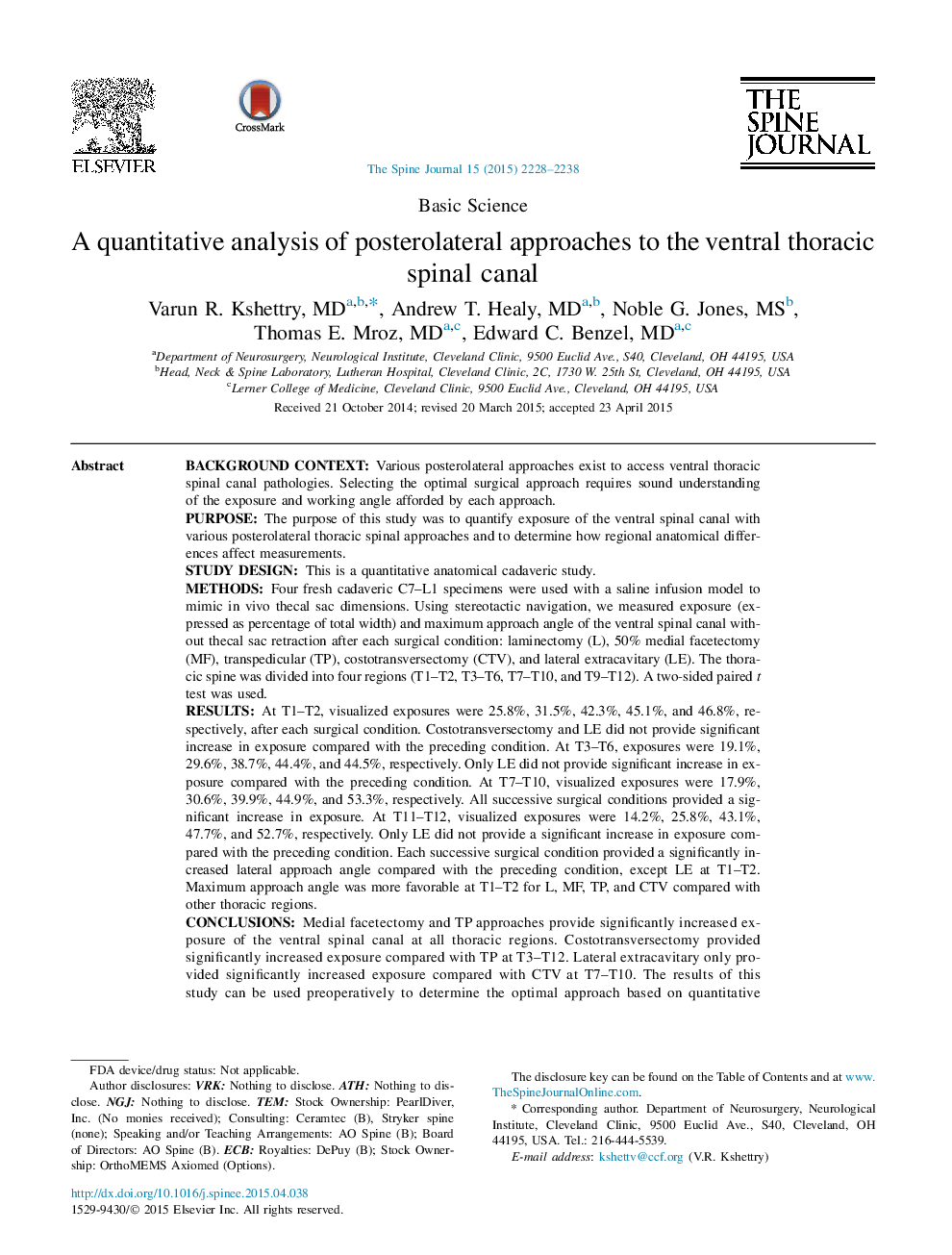| کد مقاله | کد نشریه | سال انتشار | مقاله انگلیسی | نسخه تمام متن |
|---|---|---|---|---|
| 6212106 | 1268566 | 2015 | 11 صفحه PDF | دانلود رایگان |
Background contextVarious posterolateral approaches exist to access ventral thoracic spinal canal pathologies. Selecting the optimal surgical approach requires sound understanding of the exposure and working angle afforded by each approach.PurposeThe purpose of this study was to quantify exposure of the ventral spinal canal with various posterolateral thoracic spinal approaches and to determine how regional anatomical differences affect measurements.Study designThis is a quantitative anatomical cadaveric study.MethodsFour fresh cadaveric C7-L1 specimens were used with a saline infusion model to mimic in vivo thecal sac dimensions. Using stereotactic navigation, we measured exposure (expressed as percentage of total width) and maximum approach angle of the ventral spinal canal without thecal sac retraction after each surgical condition: laminectomy (L), 50% medial facetectomy (MF), transpedicular (TP), costotransversectomy (CTV), and lateral extracavitary (LE). The thoracic spine was divided into four regions (T1-T2, T3-T6, T7-T10, and T9-T12). A two-sided paired t test was used.ResultsAt T1-T2, visualized exposures were 25.8%, 31.5%, 42.3%, 45.1%, and 46.8%, respectively, after each surgical condition. Costotransversectomy and LE did not provide significant increase in exposure compared with the preceding condition. At T3-T6, exposures were 19.1%, 29.6%, 38.7%, 44.4%, and 44.5%, respectively. Only LE did not provide significant increase in exposure compared with the preceding condition. At T7-T10, visualized exposures were 17.9%, 30.6%, 39.9%, 44.9%, and 53.3%, respectively. All successive surgical conditions provided a significant increase in exposure. At T11-T12, visualized exposures were 14.2%, 25.8%, 43.1%, 47.7%, and 52.7%, respectively. Only LE did not provide a significant increase in exposure compared with the preceding condition. Each successive surgical condition provided a significantly increased lateral approach angle compared with the preceding condition, except LE at T1-T2. Maximum approach angle was more favorable at T1-T2 for L, MF, TP, and CTV compared with other thoracic regions.ConclusionsMedial facetectomy and TP approaches provide significantly increased exposure of the ventral spinal canal at all thoracic regions. Costotransversectomy provided significantly increased exposure compared with TP at T3-T12. Lateral extracavitary only provided significantly increased exposure compared with CTV at T7-T10. The results of this study can be used preoperatively to determine the optimal approach based on quantitative measurements and region-specific anatomical differences.
Journal: The Spine Journal - Volume 15, Issue 10, 1 October 2015, Pages 2228-2238
